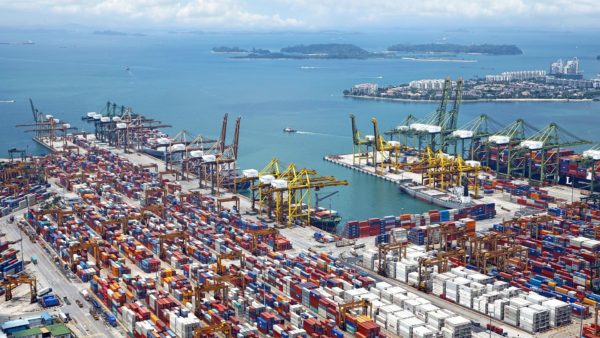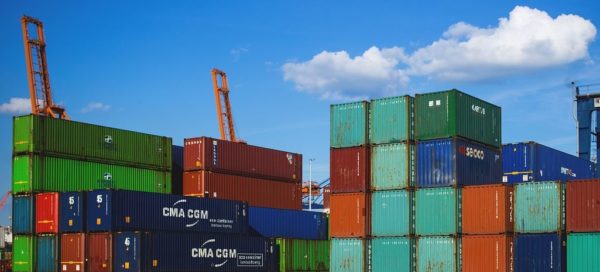A group of companies that decline to be named but say they are players in the U.S. solar industry have asked the U.S. Commerce Department to impose antidumping (AD) and countervailing duty (CVD) orders on a handful of producers of crystalline silicon photovoltaic cells and modules that are imported from Malaysia, Thailand, and Vietnam.
The American Solar Manufacturers Against Chinese Circumvention filed three petitions through the law firm Wiley Rein requesting that Commerce investigate what it said are “unfairly traded imports” from the three countries.
The group said that circumvention of antidumping and duties on Chinese solar products has “hobbled the U.S. industry, eviscerated our supply chains, and put our clean energy future at risk.”
(Read “Solar modules are being detained by customs agents, reports suggest.”)
 The group asked the Commerce Department to investigate the following companies:
The group asked the Commerce Department to investigate the following companies:
Malaysia: Jinko Solar Technology Sdn. Bhd.; LONGi (Kuching) Sdn. Bhd. and its affiliate Vina Cell Technology Company Limited and Vina Solar Technology Company Limited; JA Solar (Malaysia) Co., Ltd. or JA Solar Malaysia Sdn. Bhd.
Thailand: Canadian Solar Manufacturing (Thailand) Co., Ltd.; Trina Solar Science & Technology (Thailand) Co., Ltd.; Talesun Solar Technologies Thailand or Talesun Technologies (Thailand) Co., Ltd.; Astroenergy Solar Thailand Co., Ltd
Vietnam: Trina Solar (Vietnam) Science & Technology Co., Ltd.; Canadian Solar Manufacturing (Vietnam) Co., Ltd.; China Sunergy Co., Ltd. in Vietnam; Boviet Solar Technology (Vietnam) Co., Ltd. or Boviet Solar Technology Co., Ltd.; GCL System Integration Technology (Vietnam) Co. Ltd.; Vina Cell Technology Company Limited and Vina Solar Technology Company Limited; LONGi Green Energy Technology Co., Ltd.; JinkoSolar (Vietnam) Co., Ltd.
The Commerce Department has 45 days to initiate an investigation based on the petitions, said Timothy Brightbill, a partner in the Wiley Rein law firm. A preliminary determination could be issued in 180 days with a final determination in around a year’s time. He said that any duties would be retroactive to the start of the investigation.

Brightbill said in an interview with pv magazine USA that the group’s requested action is similar to action taken in relation to cold-rolled and corrosion-resistant steel from China. After duties were put in place, Chinese companies were found to be sending steel to third countries for final processing before being exported to the U.S. In that case, tariffs were imposed country-wide. The scope being sought by the group he represents is more narrowly focused on a handful of companies.
He declined to name members of the antidumping organization, saying that “Given the Chinese control of the entire solar supply chain, retaliation is likely if their identities are revealed.” In such situations, the companies who make up the coalition “are allowed under U.S. law to remain confidential,” he said.
Imports
The Energy Information Administration’s 2020 Annual Solar Photovoltaic Module Shipments Report, released on July 30, said that solar PV imports totaled just under 19.3 million peak kilowatts, and exports totaled 376,483 peak kilowatts.
The EIA report listed Vietnam as the top source of PV imports to the U.S. at 8.1 million peak kilowatts. South Korea and Thailand combined were second at 4.4 million peak kilowatts, and Malaysia was third at 3.2 million peak kilowatts. The report lumped together imports from China, Hong Kong, Singapore, and Taiwan, which totaled less than 950,000 peak kilowatts.
Origins
The original AD and CVD investigations on imports of crystalline silicon PV cells were launched in November 2011. The U.S. International Trade Commission separately determined that U.S. producers were being materially hurt by the imports, and the Commerce Department in December 2012 imposed import tariffs. In 2019, the Department extended both import tariff orders.
The current antidumping China-wide rate is 238.95%. Certain Canadian Solar companies and certain JinkoSolar companies received 95.50% AD rates in the last completed review, the petition said. Certain Trina Solar companies received a 92.52% AD rate, also in the last completed review. The countervailing duty “all others” rate is 15.24%, although certain Canadian Solar, Trina Solar, and Jinko Solar companies received a 11.97% CVD rate in the last completed review.
In their petition, the U.S. companies complain that after AD/CVD duties were imposed on Chinese-origin solar cells, Chinese integrated producers started building cell and module assembly plants across Southeast Asia, while continuing “to rely heavily” on Chinese labor, raw materials, and inputs.

Image: Pixabay
The petition alleged that “Chinese producers have developed a circumvention scheme” that involves moving the end of the production process for CSPV products to a third country “for the express purpose of avoiding AD/CVD duties.” At the same time, the Chinese producers retained “as much of the subsidized supply chain and labor as possible in China.”
Ports of call
The petition also claimed that China’s share of global capital expenditures continues to grow and to “dwarf” the rest of the world. For example, in 2020, China accounted for around 80% of solar-related polysilicon production in 2020, and 95% of global production of wafers in 2019.
In turn, most of the CSPV products imported into the United States arrive from Southeast Asia post-assembly, the petition said. But around 70% of the actual value of the equipment accrues to China where key pre-assembly steps in the making of the equipment take place, including production of solar-grade silicon, ingots, wafers, and cells.

Image: Pixabay
As a result, production costs from Southeast Asian nations generally account for around 27% of the value of a typical PV module exported to the U.S., the petition said. This is despite those nations most likely being the last port of call before final, assembled equipment arrives in the U.S.
The petition claimed that in 2011, the U.S. imported $336,806 of CSPV cells and modules from Thailand. Since then, imports from Thailand have increased to over $1.4 billion in 2020. Through the first five months of 2021, imports from Thailand reached $532 million of imports. In addition, Thai import value share of CSPV cells and modules went from a 0.01% share of total U.S. imports in 2010 to nearly 20% in the first five months of 2021.
Similarly, the U.S. imported $1.3 million of CSPV cells and modules from Vietnam in 2011, the petition alleged. Since then, Vietnamese imports have risen to more than $1.6 billion in 2020, and more than $681 million in the first five months of 2021. Vietnam’s import value share of CSPV cells and modules went from less than a 1% share in 2010 to nearly 25% in the first five months of 2021.
Finally, U.S. imports of CSPV cells and modules from Malaysia rose from around $576 million in 2011 to more than $2.3 billion in 2020.
The petition concluded that these import trends “are a strong indication” that Chinese producers “are circumventing” antidumping and countervailing duty orders by shipping Chinese-origin components to the three Southeast Asian countries for completion into CSPV cells or modules “to be sold at dumped and subsidized prices” in the United States.
This content is protected by copyright and may not be reused. If you want to cooperate with us and would like to reuse some of our content, please contact: editors@pv-magazine.com.









By submitting this form you agree to pv magazine using your data for the purposes of publishing your comment.
Your personal data will only be disclosed or otherwise transmitted to third parties for the purposes of spam filtering or if this is necessary for technical maintenance of the website. Any other transfer to third parties will not take place unless this is justified on the basis of applicable data protection regulations or if pv magazine is legally obliged to do so.
You may revoke this consent at any time with effect for the future, in which case your personal data will be deleted immediately. Otherwise, your data will be deleted if pv magazine has processed your request or the purpose of data storage is fulfilled.
Further information on data privacy can be found in our Data Protection Policy.